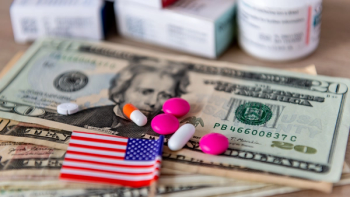
Email Marketing's Growing Maturity
Scary tales of The-Next-Big-Social-Thing killing off the first digital marketing blockbuster have been building for years. McKinsey’s November 2013 iConsumer survey reported a 20 percent decline in email usage between 2008 and 2012, as the medium gave up ground to social networks and mobile messaging apps.
Email marketing is still very much with us, despite much talk of its demise. But, writes Peter Houston, it has moved on from its “spammy” adolescence.
Scary tales of The-Next-Big-Social-Thing killing off the first digital marketing blockbuster have been building for years.
Peter Houston
Actually, the long-anticipated demise of email marketing looks further away than ever with practitioners using data to make better decisions, developing sophisticated relationships with their customers and leaving email’s spotty, spammy adolescence behind. According to
Email marketing’s growing maturity is down to its role as the corner-stone of multichannel marketing, a unique identifier at the centre of a 360-degree view of the customer. In the rapidly shifting landscape of social media, it can be the only thing linking together disparate social accounts and applications and unlocking a customer’s multichannel behaviors.
Most people - there are almost 4 billion email accounts globally - are
There’s a strong personal aspect to email with people receiving messages directly to their own inbox and often storing messages that are important to them. This and its scalability has made email a cost-effective marketing tool. But it has also led to it being used as something of a blunt instrument and led to many consumers equating email marketing as spam marketing.
Traditional email marketing schedules have centred on a regular promotional blasts, scattergun broadcasts that have gone to everyone, everywhere, all at one time. But smarter, grown-up email marketing strategies, are pushing up ROI by increasing relevancy - sending the right information to the right person at the right time.
Like so much in today’s marketing world, better targeting of email messages relies on data. Increased use of behavioral analysis, a view of content that customers have engaged with, facilitates more relevant and timely email campaigns. And marketers are choreographing the customer journey more carefully to capture demographic and attitudinal information and better target relevant content.
As patients and HCPs increase their online engagement, pharma marketers will discover new opportunities to deliver ever tighter messaging. Email targeting can now be reactive, using marketing automation based on behaviours, but it can also be proactive, building on customer insight developed from the interpretation of data. The best approach is probably a balance of automation and insight.
It’s important to realize, however, that there is more data volume and complexity out there than ever before. Knowing what’s useful and being able to act on it drives the business and it is key to have a top-down approach in the formation of strategy for data-driven marketing.
In the past the only questions marketers asked were how many emails can I send and how many people opened them? Now it’s not just about questioning the performance of campaigns, but about how those campaigns affect the behaviour of a customer. What stage was the customer at in the lifecycle when they engaged with the content? What content should they receive at each stage? How can you build success for the customer, and build a strong relationship?
The secret to uncovering those behaviours is a robust test and learn approach based on a clear understanding of what exactly you’re trying to achieve. As Rick Meyer points out in a blog post asking ‘
Newsletter
Lead with insight with the Pharmaceutical Executive newsletter, featuring strategic analysis, leadership trends, and market intelligence for biopharma decision-makers.




